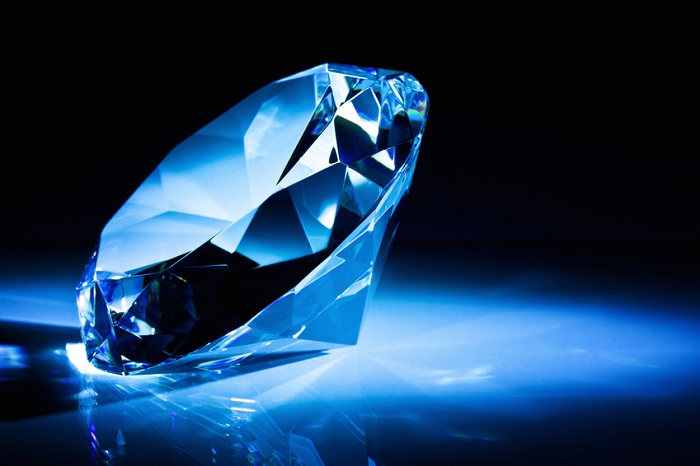The rarest and most expensive fancy colored diamond is the Natural Blue Diamond. A blue diamond, like other colored diamond, are made of carbon that is exposed to another natural element. In this case, a blue diamond comes in contact with boron molecules. The more boron present in these diamonds, the more saturated the blue.
How rare are natural blue diamonds?
12-14 million carats of diamonds are polished every year. From these about 0.01% are fancy, and the majority of those fancy colors are yellow, brown, grey, and black. The remaining 20% are sought after red, pink, orange, green, purple, and blue. In the last twenty years, a meager 50 Fancy Blue Diamonds have ever been auctioned.
This rarity and increased demand along with dwindling supply make these diamonds an incredible investment opportunity. Since 1999, for example, a 1.07-carat Fancy Light Blue was auctioned at a little over $20,000 per carat weight. In 2016 however, that same Light Fancy Blue sold for an incredible $286k for 5 carats.
The 4 C’s:
Accepted as the gold standard of gemological grading, the Gemological Institute of America (GIA) created an internationally recognized grading system for diamonds, called “the 4C’s”. These refer to the cut, color, clarity, and carat weight of a colorless diamond.
In Fancy Colored diamonds this grading is also used, but with its own unique differences. For colored diamonds, the most important “C” is color. They use three characteristics to grade color.
- Hue – refers to the diamond’s dominant color it will also include one of two secondary hues if they are present
- Tone – this refers to how the light penetrates and affects the main hue. These tones are broken down like this: very light, light, medium, medium-dark, dark, and very dark,
- Saturation – color’s strength and intensity. The stronger and more vivid, the more expensive.
The GIA will then describe the color based on ALL three components on their certificates.
Clarity, on the other hand, is less important for colored diamonds. This is because the color can hide some flaws in the diamond.
The cut is very important, as a poorly cut diamond will either accentuate the natural color or give it a dull appearance. Light performance is directly connected to the cut. What makes a diamond beautiful is that famous sparkle. Cut too shallow and the light won’t have space to refract giving a dull appearance. Only talented and professional diamond cutters and polisher will know exactly how to get the most shine and sparkle out of a diamond. In a Fancy Color stone amount of light that remains within the stones’ facets, the more color is shown.
Cut and shape are not the same, but they are connected. Cut refers to style regardless of the shape. So you can have the same shaped-diamond but with many varying cuts. The science behind this has to do with the number of facets cut as well as the symmetry between the top known as the table and proportion to the rest of the jewel.
Certification
Make sure any diamond you purchase has the appropriate certifications. The first should be one from the GIA or equally reputable agency who is trusted to grade diamonds accurately. This means your certificate should state the cut, color, clarity, and carat weight. Always check your GIA reports authenticity as well as your jeweler’s reputation. With so many imitations, you always want to be sure your natural blue diamond is 100% authentic and certified.
Other critical certifications will attest that your diamonds are conflict-free. This is referred to as the Kimberley Process. You can go to sites like, Asteria Diamonds, and see what a Kimberley Process looks like to certify that your diamonds are free of conflict
Takeaway
Blue diamonds are exceptionally rare, beautiful, and going up in value steadily. To ensure you have the perfect purchase make sure your diamond is certified by the GIA and is conflict-free. Blue diamonds make excellent investments if they have the right balance of 4 c’s. Make sure that the cut optimizes the diamonds light performance which should shine and sparkle. Colored diamonds are also described by three major elements of their color, hue, tone, and saturation. Enjoy your natural blue diamond, an amazing addition to any collection.












